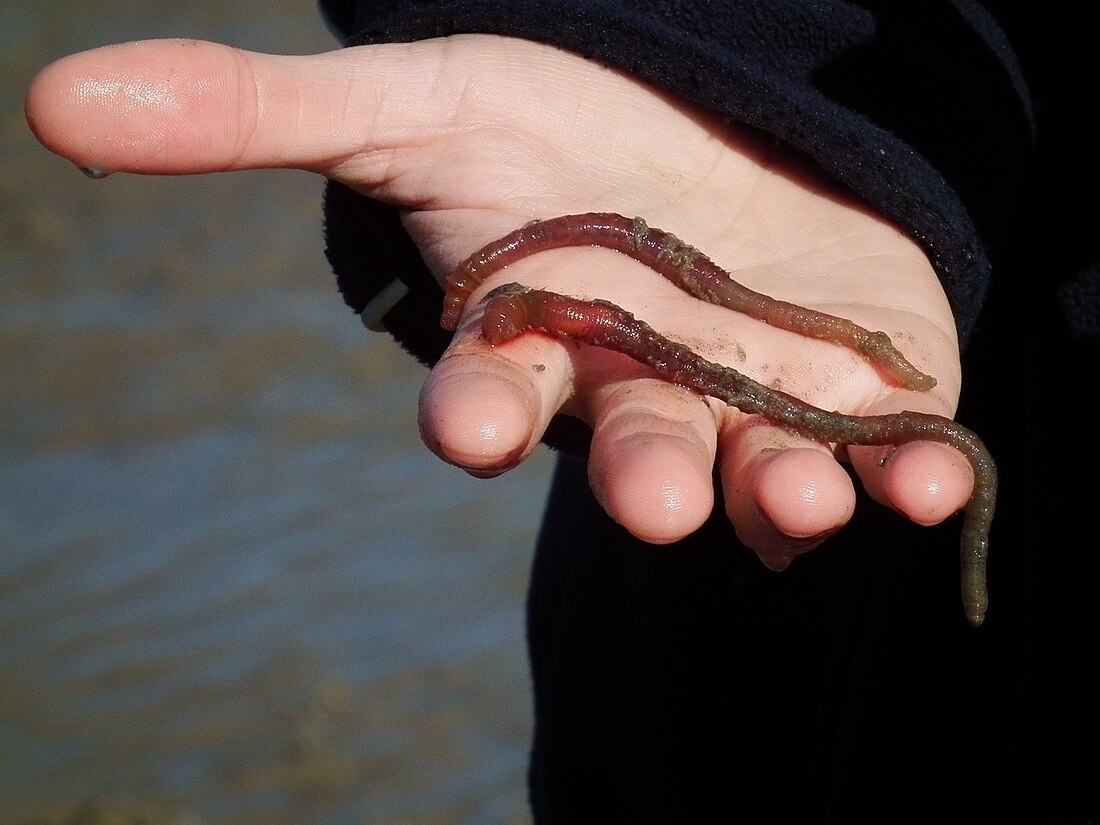Top Qs
Timeline
Chat
Perspective
Blow lugworm
Species of annelid worm From Wikipedia, the free encyclopedia
Remove ads
The blow lugworm (Arenicola marina), also known as sandworm, is a large species of marine worm. Its coiled castings are a familiar sight on a beach at low tide but the animal itself is rarely seen except by those who, from curiosity or to use as fishing bait, dig the worm out of the sand.
Remove ads
Description
Summarize
Perspective
When fully grown, blow lugworms of the coasts of Europe grow to 5.1 in (13 cm) long and 0.375 in (1 cm) in diameter. It weighs 2 to 5 oz (57 to 142 g). The body is like that of any typical annelid: ringed or segmented. Its head end, which is blackish-red and bears no tentacles or bristles, passes into a fatter middle part which is red. This in turn passes into a thinner yellowish-red tail end. The middle part has bristles along its sides and also pairs of feathery gills. There is a well-developed system of blood vessels with red blood rich in the oxygen-carrying pigment, haemoglobin.[2] Lugworms also have hairs on the outside of their bodies that act as external gills. These can rapidly increase its uptake of oxygen. Lugworm blood has a large oxygen carrying capacity which may have medical applications.[3]
A related species of lugworm also found in the UK is the black lugworm (Arenicola defodiens).[4] As well as growing larger than blow lugworms, black lugworms are generally much darker, often totally black. They can also be distinguished by the different wormcasts they produce; Arenicola defodiens makes a spiral cast, while that of Arenicola marina is jumbled.[5]
Remove ads
References
Wikiwand - on
Seamless Wikipedia browsing. On steroids.
Remove ads

